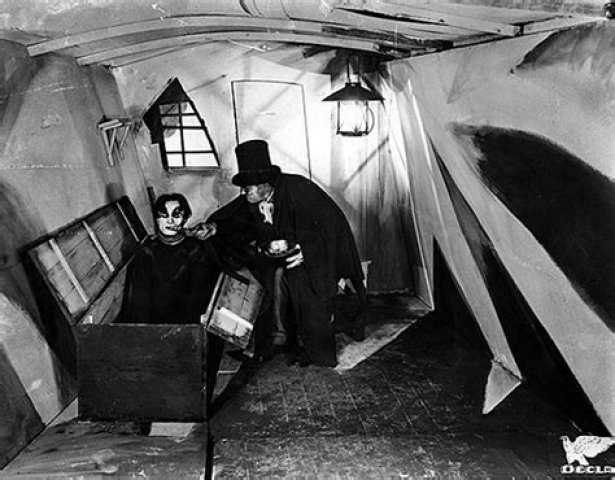Visionary Architecture on Film
Free Movies at the Clark
By: Clark - Mar 02, 2023
A five-part Visionary Architecture on Film series debuts at the Clark Art Institute on select Thursdays this spring. Presented in connection with the Clark’s exhibition Portals: The Visionary Architecture of Paul Goesch, this film series explores themes related to Goesch’s life and work in early twentieth-century Germany.
The Clark screens The Cabinet of Dr. Caligari on Thursday, March 23, The Golem: How He Came into the World on Thursday, April 13, Metropolis on Thursday, April 20, Things to Come on Thursday, May 4, and Blade Runner on Thursday, May 18. All screenings are free and open to the public and take place at 6 pm in the Clark’s auditorium.
The Cabinet of Dr. Caligari
March 23
The Cabinet of Dr. Caligari (1920; 51 minutes) may be the quintessential film of German Expressionism. A hypnotist uses a sleep-walking man to commit murder—and the absurdity of the plot is rivaled only by the film’s bizarre and elaborate set designs. Beyond its visual delights, Dr. Caligari critiques both the absurdity of bureaucracy and the interwar German government.
The Golem: How He Came into the World
April 13
Set in medieval Prague, The Golem: How He Came into the World (1920; 1 hour, 26 minutes) tells the story of the Jewish folkloric figure made of clay who comes to life to prevent the Jews’ expulsion from the city. The astonishing, quasi-medieval sets for that city are the work of Expressionist architect Hans Poelzig and resonate closely with Paul Goesch’s drawings in the Clark’s exhibition. Live musical accompaniment is provided by percussionist Matthew Gold and cellist Paul de Jong.
Metropolis
April 20
In a futuristic city marked by extreme inequality, the wealthy live lavishly in skyscrapers while workers toil underground, operating machines that keep society running. One of the first science fiction films, Fritz Lang’s Metropolis (1927; 1 hour, 54 minutes) both reflected and accelerated the emergence of Art Deco design in the U.S. and Europe. With its themes of mechanization, societal stratification, and fascism, the film tours the issues that animated interwar Germany.
Things to Come
May 4
H.G. Wells wrote Things to Come (1936; 2 hours) in response to Fritz Lang’s Metropolis (1927). The film spans 1936–2036 as the citizens of Everytown, England envision the future of their city and debate the role technology should play. It is set in a subterranean cave, the antithesis to the skyscraper of Metropolis, and includes abstract sequences designed by Bauhaus artist Lászlo Moholy-Nagy.
Blade Runner
May 18
Once the wealthy have left for other planets, Los Angeles becomes a home to the outcasts who remain on Earth. In Blade Runner (1982; 1 hour, 50 minutes), the city as we know it is only barely recognizable amidst dense high rises and pouring acid rain. Architecture plays many roles in this futuristic noir film, starring Harrison Ford; some buildings are villainous while others offer a glimmer of hope.
All Visionary Architecture on Film screenings are free; no registration is required. This series is organized by Ella Comberg, MA ’24 in the Williams Graduate Program in the History of Art. For more information, visit clarkart.edu/events.

